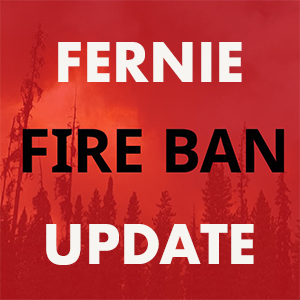Teck Resources Limited announced today it is setting a goal to become a nature positive company including through conserving or rehabilitating at least three hectares for every one hectare affected by its mining activities.
Teck is taking immediate action towards achieving this ambitious goal through land conservation investments that will protect 14,000 hectares of wildlife habitat and ecosystems in Canada and Chile. This is equivalent to over 40 percent of our current mining footprint and equal to 35 Stanley Parks in Vancouver; 40 Central Parks in New York; more than twice the size of Manhattan; or 20,000 football (soccer) fields.
“We are committed to working with local partners, communities and Indigenous Peoples to conserve ecologically and culturally significant lands and work towards the goal of becoming a nature positive mining company by 2030,” said Don Lindsay, President and CEO, Teck. “Nature loss is a serious global challenge that we are all called on to do our part to halt and reverse. Working towards being nature positive in each region we operate builds on Teck’s long-standing commitment to biodiversity and reflects the passion of our employees for caring for the land where they live and work.”
Teck’s new conservation initiatives announced today protect 14,000 hectares and include:
• $2 million donation to the Nature Conservancy of Canada (NCC) for the purchase and ongoing management of the nearly 8,000-hectare Next Creek Watershed in the East Kootenays of British Columbia. Next Creek was the last remaining unprotected land within the Darkwoods Conservation Area and this purchase protects the ecological integrity of a conservation network that has national and international significance.
• Donation to NCC of approximately 162 hectares of Teck-owned land in the Wycliffe Wildlife Corridor, also known as the Luke Creek Conservation Corridor, near Kimberley, B.C., and further donation of $600,000 for the ongoing management of the land.
• 5,800 hectares of a unique and high-value wetland ecosystem near Teck’s Quebrada Blanca Operations in Chile will be protected in partnership with the Ollagüe Quechua community. Known as the Salar de Alconcha, or Alconcha Salt Flat, the lands are located northwest of the village of Ollagüe near the Bolivian border at 4,123 meters above sea level. The initiative is the first of its kind in Chile.
• $10 million to create an Indigenous Stewardship Fund that will support Indigenous communities and partners in the development of Indigenous-focused environmental stewardship initiatives as well as engagement, education, capacity-building and participation in support of conservation objectives in regions where Teck operates.
• $12 million in new funding to the Nature Conservancy of Canada to support future high priority conservation projects in B.C., in addition to those announced today.
The conservation investments announced today build on Teck’s purchase of over 7,000 hectares of private lands in the Elk and Flathead River Valleys of British Columbia, set aside for conservation. Teck’s purchase of these lands in 2013 was one of the single biggest private sector investments in land conservation in B.C. history. In 2021, Teck and the Ktunaxa Nation announced the signing of a Joint Management Agreement to ensure the protection of the area’s social, cultural and ecological value.

Nature Positive by 2030
The World Economic Forum ranks biodiversity loss and ecosystem collapse as one of the top threats humanity will face this decade, and global leaders, including the G7, are calling for the world to become both net zero and nature positive.
For Teck, working to become nature positive means that by 2030, our conservation, protection and restoration of land and biodiversity will exceed the disturbance caused by our mining activities from a 2020 baseline. In doing so, we will conserve or rehabilitate at least three hectares for every one hectare affected by our mining activities, and take action immediately in three focus areas:
• Nature positive decision making guided by Western science and Indigenous learning, including assessing the biodiversity impacts of our actions and avoiding or minimizing negative impacts where possible as part of our planning.
• Rehabilitation excellence to accelerate our pace of rehabilitation to ensure it is in progress for all eligible land impacted by mining at our operations by 2030.
• Conservation, protection and restoration through further partnerships such as those announced today. The conservation projects announced today total 14,000 hectares, equivalent to over 40% of Teck’s current mining footprint.
Recognizing the global imperative to halt and reverse nature loss by 2030 and the critical role natural climate solutions can play in mitigating climate change, this commitment also supports Teck’s net-zero climate strategy and its contribution to the United Nations Sustainable Development Goals.
For more information on our approach to working to become nature positive, visit Teck’s Nature Positive Page.
























